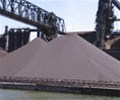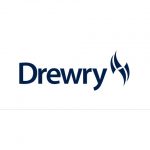The rising interest in clean ammonia, touted as the next zero-carbon fuel, is boosting orders for Very Large Ammonia Carriers (VLAC). The orderbook is stacking up with the specialised vessels, but concerns over possible delays in the start-up of planned ammonia projects have thrown a caution in the air. This is because the shortage of clean ammonia could compel owners to use their VLACs in the LPG trade. As a result, this massive influx of vessels could create oversupply and depress charter rates.
Introduction
Ammonia is a major contributor to the global economy, with its massive utilisation in the agriculture industry due to its use in fertilisers. It is widely shipped via fully refrigerated LPG carriers (MGCs) ranging between 30kcbm and 50 kcbm. Traditionally, ammonia is produced by the Haber-Bosch process, producing ‘Grey’ ammonia, which accounts for around 1.8% of global carbon dioxide emissions.
Global annual production of grey ammonia is around 185-190 million tonnes, half of which is produced by Asian countries, but only 15-20 million tonnes are traded annually through the seaborne route, as most of it is consumed by the fertiliser sector. China is the largest producer, contributing nearly 30% to the global output, producing a key portion by coal-fired plants. The capacity utilisation for ammonia plants varies from 30% to 80%, depending on the feedstock and the firing methodology. Meanwhile, Saudi Arabia, Indonesia and the US are the top seaborne ammonia exporters.
Globally, around 198 terminals can handle ammonia as a cargo, with a combined capacity of 9.6 million cbm. South America and the Middle East are the leading regions in terminal capacity.
Trade and demand
In recent years, the ammonia trade has weakened despite steady demand. This downturn is due to ample domestic availability of ammonia, fertiliser production capacity and heightened natural gas prices, which has resulted in global shortages. Demand for ammonia remained robust because of its high dependency on the fertiliser and refrigerant industries.
Global consumption was around 190 million tonnes in 2023, up from 178 million tonnes in 2018. Asia is the leading market for ammonia, particularly China which accounts for 40% of the global demand, followed by India. The long-term demand outlook is bright because of the rapid urbanisation, supporting its demand in the industrial sector.
Clean ammonia (Green + Blue)
The low carbon versions of the conventional grey ammonia, which is used as fertilisers and raw material for chemical production, are Blue ammonia and Green ammonia, often termed as clean ammonia. The source of hydrogen used to produce ammonia differs between them. In order to reduce emissions, blue ammonia uses hydrogen from natural gas but also carbon capture and storage. Hydrogen from water electrolysis, powered by renewable energy, is used to produce green ammonia, which is carbon free.
Clean ammonia represents a massive potential to drive market growth and meet the decarbonisation goals of the industry. The major players already have their ambitious investment plans in the pipeline, which is likely to fulfil the global demand to a certain extent. This will be the most feasible low-carbon option in four sizeable industry segments – traditional (agricultural), co-firing (coal replacement), marine fuel and hydrogen carriers.
Ammonia – Carrier of the future
The future of ammonia transportation belongs to large parcel long-haul ammonia trades, for which a specialised version of VLGCs – VLACs (90-95k cbm) are becoming the new trend in the shipping sector. In 2023, KR (Korean Register) granted an Approval in Principle for a 200kcbm class Ultra Large Ammonia Carrier (ULAC) using ammonia fuel.
Some of the existing VLGCs are also ammonia capable, but as they were designed for the LPG trade specifically and due to the higher specific gravity of ammonia can be filled only 80-85%. Meanwhile, VLACs with strengthened hulls and tank structures can sail with 98% of its capacity filled with ammonia.
Currently, around 30% of the existing LPG fleet and 53% of the orderbook is ammonia-capable, but the majority of the ammonia seaborne trade is facilitated by the MGC segment.
For the VLGC segment, 10% of the fleet and 54% of the orderbook are ammonia-capable. These vessels, touted to be used as ‘hydrogen carriers of the future’ (due to green ammonia’s potential as an intermediary in hydrogen supply chain), warrant much larger parcels than traditional ammonia trades shipped by MGC fleet.
Interestingly, the structure of the LPG fleet is transforming. The expansion of the LPG trade into the future is set to be driven by 70+ kcbm VLGC and VLAC tonnage. According to the current orderbook, 86 vessels (38 VLACs and remaining VLGCs) are scheduled for delivery during 2024-28.
VLAC ordering, which commenced in 2023, is going strong in 2024, with the first delivery scheduled in 2026. Newbuild cost of VLACs on average is at a premium of $4-6 million over VLGCs. Some shipowners such as Dorian LPG, besides ordering a VLAC, are also investing to upgrade their VLGCs to transport ammonia, costing an average $2 million per ship.
Interestingly, about 30 VLACs on order are scheduled to be delivered in 2027, which seems over-optimistic, looking at the pace of development of ammonia plants globally.
The increasing investments for specialised ammonia carriers are due to the high market potential of green ammonia as a net-zero carbon emission fuel. At Drewry, we have been tracking the development of ammonia projects for years and as per our analysis, the clean ammonia trade is expected to rise at a CAGR of around 90% in the next 10 years. The majority of the growth will be witnessed in the next five years, provided the pace of development of announced projects remains intact.
The spurt in VLAC orders is planned by shipowners to align with the growth of the clean ammonia quantities. However, the majority of clean ammonia projects remain in the planning stages or pilot projects, which raises concerns regarding the volume of clean ammonia available for trade when VLACs are delivered, especially in 2027.
Any delay in the clean ammonia projects will compel owners to ply their VLACs in the LPG trade, where the vast addition of newbuild tonnage will oversupply the market, leading to downward pressure on charter rates. Shipowner, Avance Gas is betting on ammonia-capable MGCs over VLGCs and VLACs. The company recently sold two under construction ammonia-capable VLGCs, while going ahead with four ammonia-capable MGCs already on the orderbook.
Therefore, the transition to ammonia, although inevitable due to the commodity’s vast demand potential, could prove difficult for the gas shipping sector.
Source: Hellenic Shipping News





